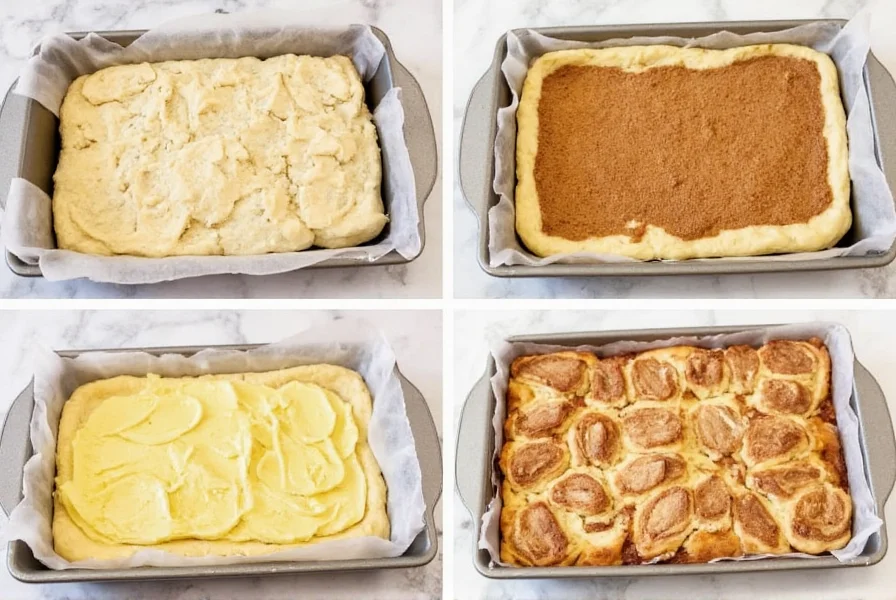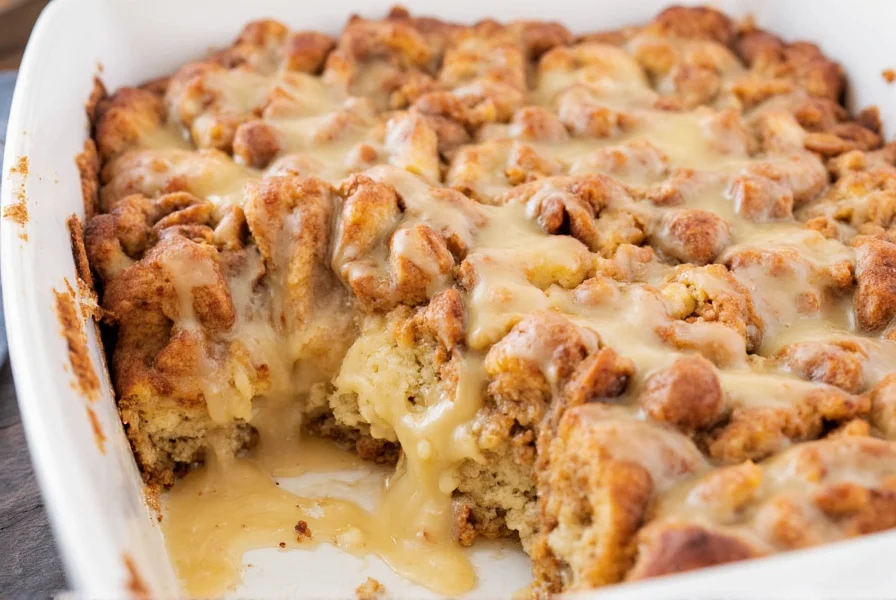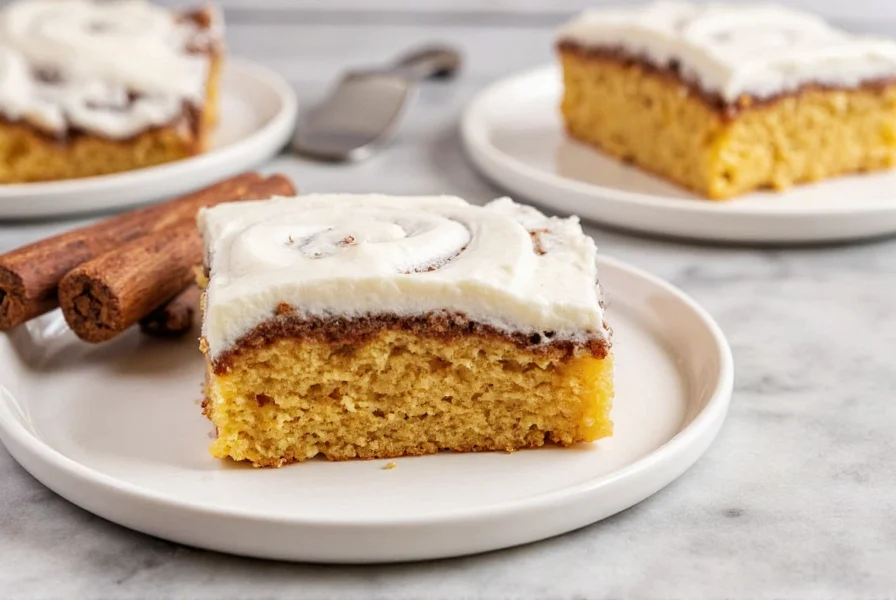Cinnamon roll dump cake is a simplified dessert that combines the beloved flavors of traditional cinnamon rolls with the effortless preparation of a dump cake. This one-pan treat requires minimal hands-on time—typically just 15 minutes of prep—while delivering the same gooey, spiced goodness through a clever layering technique that eliminates yeast-rising and intricate rolling steps.

Why This Recipe Revolutionizes Cinnamon Roll Preparation
Traditional cinnamon rolls demand precise yeast activation, multiple rising periods, and careful rolling—a process that often deters home bakers. Cinnamon roll dump cake solves these pain points by leveraging pantry staples and a strategic assembly method. The magic happens when refrigerated biscuit dough transforms into tender cake layers while absorbing melted butter and cinnamon-sugar syrup during baking.
Essential Ingredients Breakdown
Understanding ingredient roles ensures consistent results. Unlike standard dump cakes that rely on dry cake mix, this recipe uses specific components to replicate authentic cinnamon roll flavors:
| Ingredient | Function | Substitution Notes |
|---|---|---|
| Refrigerated biscuit dough | Creates cake structure without yeast | Homemade drop biscuits work but require recipe adjustments |
| Brown sugar | Provides caramel notes and moisture | White sugar yields drier texture; avoid artificial substitutes |
| Heavy cream | Forms syrup base for gooey center | Half-and-half works; dairy-free alternatives alter texture |
Step-by-Step Preparation Guide
Follow these precise steps for optimal results. The entire process takes approximately 55 minutes from prep to serving:
- Preheat and prepare: Set oven to 350°F (175°C). Grease a 9x13-inch baking dish thoroughly—this prevents sticking during the high-moisture baking process.
- Create cinnamon-sugar base: Mix 1 cup brown sugar, 3 tbsp cinnamon, and 1/4 tsp salt. Sprinkle evenly across the dish bottom.
- Layer butter strategically: Place 1/2 cup cubed unsalted butter (1 stick) directly on sugar mixture—this creates the signature syrup layer when melted.
- Arrange biscuit dough: Separate 2 cans (16.3 oz each) of refrigerated biscuits into quarters. Arrange in single layer over butter.
- Add finishing syrup: Pour 1/2 cup heavy cream mixed with 1 tsp vanilla evenly over dough pieces.
- Bake precisely: Bake 35-40 minutes until golden brown and bubbling at edges. Avoid opening oven during first 25 minutes.

Pro Techniques for Perfect Results
Professional bakers emphasize these often-overlooked details:
- Cold butter cubes: Using chilled butter prevents premature melting, ensuring proper syrup formation during baking
- Dough quartering: Cutting biscuits into quarters maximizes surface area for cinnamon absorption
- Resting period: Let cake rest 10-15 minutes after baking—this allows syrup to redistribute for optimal gooeyness
- Icing application: Drizzle cream cheese icing while cake is warm but not hot to achieve perfect absorption without melting
Popular Variations for Different Occasions
Adapt this beginner-friendly cinnamon roll dump cake recipe for special dietary needs or occasions:
- Holiday edition: Add 1/4 tsp nutmeg and 2 tbsp chopped pecans to the sugar mixture for Thanksgiving or Christmas
- Dairy-free version
- Gluten-free adaptation: Use certified gluten-free biscuit dough and increase baking time by 5-7 minutes
- Mini portion control: Prepare in muffin tins using 1 biscuit quarter per cup for individual servings
Troubleshooting Common Issues
Address these frequent problems with evidence-based solutions:
- Dry texture: Caused by insufficient liquid ingredients—always measure cream precisely and avoid substituting with lower-fat dairy
- Soggy bottom: Results from underbaking—use oven thermometer to verify temperature accuracy
- Uneven browning: Rotate pan halfway through baking for consistent results in all ovens
- Sticking to pan: Ensure thorough greasing and allow proper cooling time before serving
Serving and Storage Recommendations
Maximize freshness and flavor with these professional storage techniques:
- Best served warm within 2 hours of baking for optimal gooey texture
- Store leftovers in airtight container at room temperature for up to 2 days
- Reheat individual portions in microwave for 20-30 seconds with damp paper towel
- Freeze un-iced portions for up to 3 months; thaw and reheat before adding icing
Frequently Asked Questions
Can I use cake mix instead of biscuit dough for cinnamon roll dump cake?
No, traditional cake mix creates fundamentally different texture and flavor. Biscuit dough provides the necessary yeast-free dough structure that transforms into cake layers while absorbing flavors. Cake mix would result in overly sweet, dense texture without authentic cinnamon roll characteristics.
How do I prevent my cinnamon roll dump cake from becoming too dry?
Maintain precise liquid ratios—use heavy cream rather than milk, measure brown sugar correctly, and don't skip the resting period after baking. The cake should appear slightly underdone when removed from oven as carryover cooking completes the process.
What's the ideal baking temperature for perfect cinnamon roll dump cake?
350°F (175°C) is optimal. Higher temperatures cause uneven cooking and burnt edges, while lower temperatures prevent proper syrup formation. Always verify oven temperature with a separate thermometer for accuracy.
Can I prepare cinnamon roll dump cake ahead of time?
Yes, assemble components in the baking dish (without baking) up to 24 hours ahead. Cover tightly and refrigerate. Add 5-7 minutes to baking time if starting from cold. For best results, bake fresh and reheat portions as needed.











 浙公网安备
33010002000092号
浙公网安备
33010002000092号 浙B2-20120091-4
浙B2-20120091-4